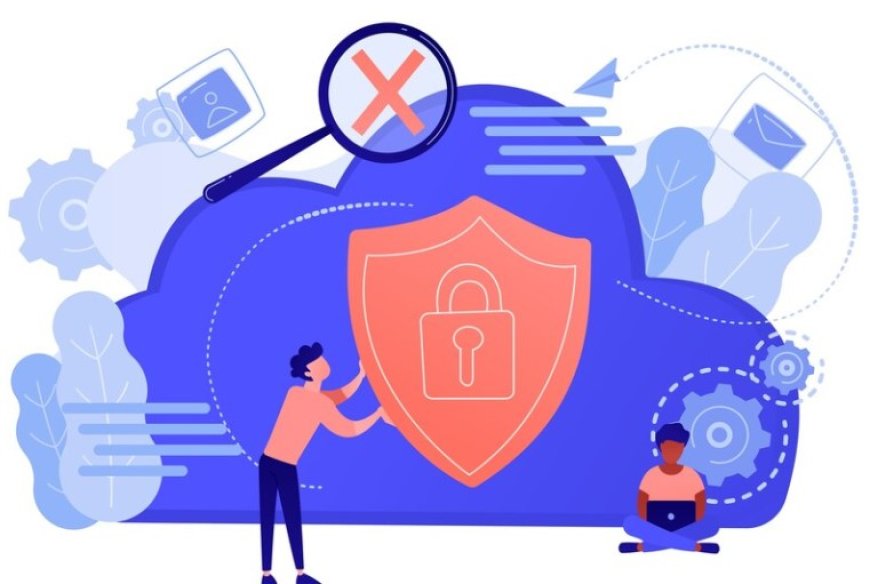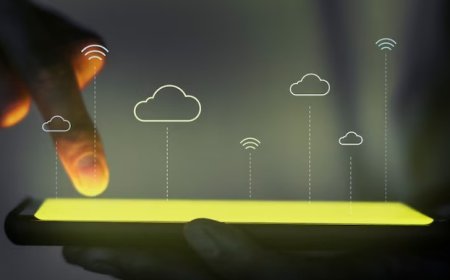Cloud Security Best Practices: Safeguarding Your Digital Assets
Explore cloud security best practices to safeguard your digital assets. Learn key strategies for robust protection in the evolving landscape of cloud computing.

In today's tech-driven world, more and more businesses are turning to cloud services for their data storage and computing needs. It's like having a super-powered computer on the internet that can be accessed anytime, anywhere. However, as we embrace the convenience of the cloud, it's crucial to recognize the potential security risks that come with it.
Think of the cloud as a digital vault where companies store their important information—customer data, financial records, and much more. Now, just like a physical vault, this digital one needs to be secure. With the increasing reliance on cloud services, the risk of unauthorized access, data breaches, and other cyber threats also grows.
Imagine if someone gained access to your business's sensitive data – it could lead to serious consequences, not just for the company but for its customers too. These risks include data leaks, identity theft, and financial losses. So, understanding and implementing good security practices in the cloud becomes essential to ensure that your digital assets are well-protected. It's like putting a lock on that digital vault to keep everything safe and sound.
Current challenges in cloud security
-
Data Breaches: One of the main worries in the cloud world is data breaches. This happens when unauthorized individuals gain access to sensitive information. Imagine it like someone breaking into a digital house and taking away valuable stuff.
-
Cyber Threats: The internet can sometimes feel like a big playground for both good and bad players. Cyber threats, like viruses and malware, are like mischievous troublemakers causing harm to your digital world. Protecting against these threats is crucial.
-
Compliance Concerns: Companies often have to follow rules and regulations regarding data protection, like GDPR or HIPAA. Adhering to these can be a headache, especially when using cloud services. It's like having to follow traffic rules on a busy highway – sometimes confusing but necessary.
-
Identity Theft: In the digital realm, stealing someone's identity means pretending to be them online. This can happen if login information gets into the wrong hands. It's like someone putting on a disguise and pretending to be you at a party – not a good situation!
-
Security Patching: Just like updating your phone or computer for the latest features, cloud services need regular updates to fix security issues. Skipping these updates is like leaving your front door unlocked – it invites trouble.
-
Insider Threats: Sometimes, the danger comes from within. Employees, whether accidentally or intentionally, can pose a security risk. Picture it as having a secret recipe for your business, and someone on the inside decides to share it with competitors.
How can businesses ensure the confidentiality of their data in the cloud?
Ensuring the confidentiality of data in the cloud is like protecting your secrets in a digital world. Here are some down-to-earth insights on how businesses can make sure their valuable information stays safe and sound.
Data Encryption:
Think of data encryption as putting your information in a secret code. Businesses can use encryption tools to scramble their data, making it unreadable to anyone who doesn't have the key. It's like having a secret language that only you and your trusted allies understand. This ensures that even if someone manages to access the data, they can't make sense of it without the proper decryption key.
Access Control Measures:
Imagine your data is a VIP party, and not everyone should have an all-access pass. Implementing access control measures is like having bouncers at the door, checking IDs and letting only authorized personnel in. Businesses can set up user roles and permissions, ensuring that only the right people can view or modify specific data. It's all about limiting access to those who genuinely need it.
Multi-Factor Authentication (MFA):
Picture MFA as having more than one lock on your digital safe. It adds an extra layer of protection by requiring users to provide multiple forms of identification. This could be a combination of something they know (like a password) and something they have (like a code sent to their phone). It's like needing both a key and a secret handshake to enter your secure space.
Regular Security Audits:
Security audits are like health check-ups for your digital systems. They involve reviewing and assessing security measures regularly to identify and fix potential vulnerabilities. It's akin to checking your home for weak points and reinforcing them before a break-in happens. Regular security audits ensure that businesses stay one step ahead of potential threats.
Employee Training and Awareness:
Your employees are the guardians of your digital kingdom, and training them is like arming them with the knowledge to protect it. Educate staff on the importance of security practices, like creating strong passwords and recognizing phishing attempts. It's like teaching everyone in your family to lock the doors and be cautious of strangers – a simple yet effective way to enhance security.
Secure Data Transmission:
Sending data between devices or over the internet is like mailing a letter. To keep it private, use secure channels like HTTPS. It's similar to sending your letter in a sealed envelope rather than on a postcard for everyone to see. Secure data transmission ensures that your information reaches its destination without prying eyes along the way.
In the vast landscape of the digital world, ensuring data confidentiality is like safeguarding your most valuable treasures. By employing these practical measures, businesses can create a robust shield around their data, making it a challenging fortress for any potential threats. Just as you would lock your home before leaving, securing data in the cloud involves taking sensible steps to keep it safe from digital intruders.
Organizations Navigate compliance requirements while using cloud services
When it comes to using the cloud for storing important information, organizations find themselves in a bit of a balancing act. Imagine it like driving a car – you want to go fast and reach your destination, but you also need to follow the traffic rules. In the cloud world, these "traffic rules" are the compliance requirements, which are like a set of guidelines and regulations to ensure everyone plays fair and safe.
Firstly, organizations need to identify which compliance rules apply to them. It's a bit like figuring out which traffic rules are relevant on your journey – you wouldn't follow rules for boats if you're driving a car. This involves understanding the nature of the data they're handling and the industry they operate in. For example, healthcare organizations might have to follow different rules (like HIPAA) compared to a retail business.
Once these rules are clear, organizations need to work closely with their cloud service providers. Think of cloud service providers as travel companions – they provide the vehicle (the cloud infrastructure), and you need to make sure it's equipped with the necessary safety features. Reputable cloud providers understand the importance of compliance, so they often have security measures in place. It's a bit like choosing a car rental company that values safety and reliability.
Now, organizations can't just rely on their cloud provider alone – they also need to play their part. This involves implementing internal policies and practices to ensure that everyone in the organization is on the same page regarding compliance. It's like having everyone in the car aware of the travel plan and the traffic rules you need to follow.
Regular check-ins and audits are essential in this journey. It's like stopping at rest areas during a road trip to make sure everything is going smoothly. Organizations need to regularly assess their cloud environment, ensuring that it aligns with the compliance requirements. If there's a detour or unexpected roadblock (a change in regulations), they need to be ready to adjust their course accordingly.
Ensuring cloud security is like putting a sturdy lock on your digital treasure chest. The importance of safeguarding your data cannot be overstated, considering the increasing reliance on cloud services. Businesses, like captains steering their ships, are encouraged to implement the best security practices available. It's not just about protection; it's about ensuring a smooth voyage in the ever-changing sea of digital threats. As the landscape of cloud security evolves, staying vigilant and proactive is key, like keeping an eye on the horizon for new challenges while sailing towards a secure and resilient digital future.




























































